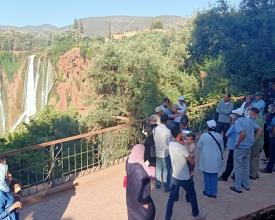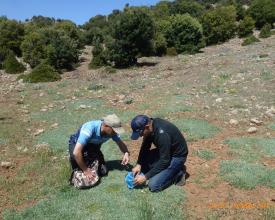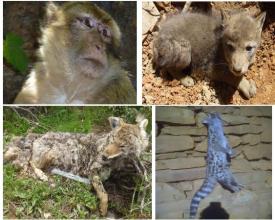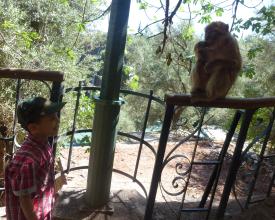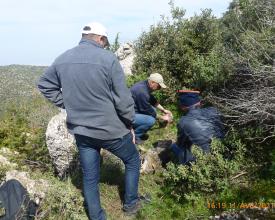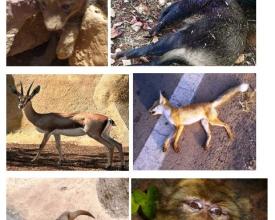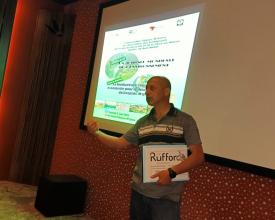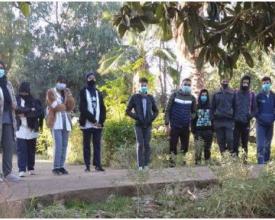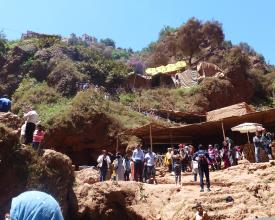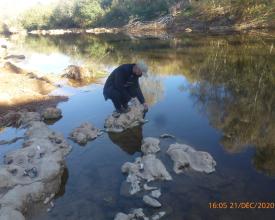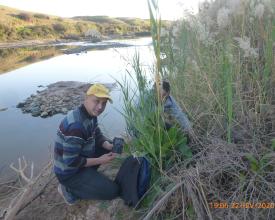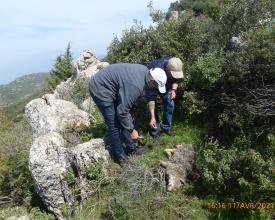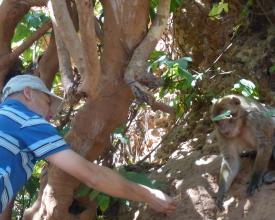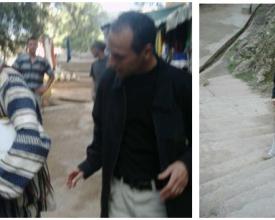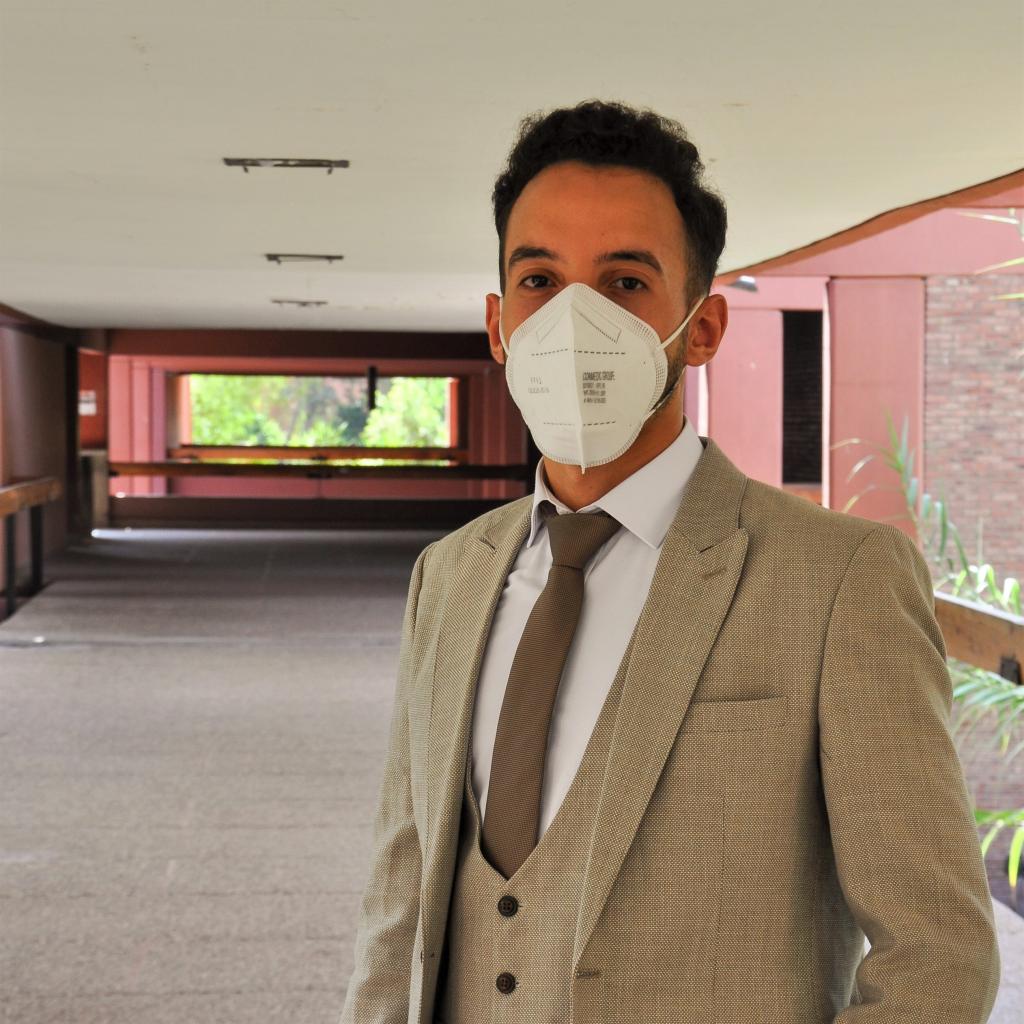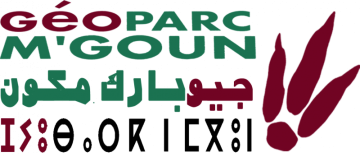
Human–wildlife conflict and threatened species management in the protected areas of the central High Atlas, Morocco
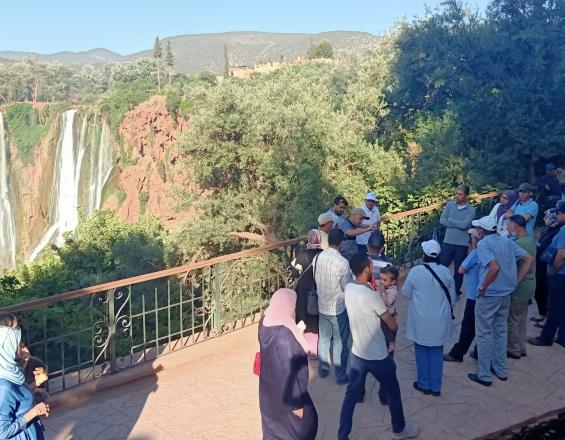
In the central High Atlas there is an increasing decline of biodiversity. Actions to protect threatened species and for the coexistence between humans and wildlife have been initiated. As part of a development project, we have trained poachers to become tourist guides and they participate today in the conservation of biodiversity. Our efforts to raise the public awareness and education created an effective conservation education and involved number of people in the surveillance of wildlife. We have also initiated a project aiming to manage human-wildlife conflict. This project has increased public tolerance for wild animals and encouraged residents to use some non-lethal methods to keep wild animals away. Durind the two last decades, we conducted a very large number of scientific research about several species and habitats. In parallel, we have involved local, regional and national authorities in the protection of species and forests.
Context
Challenges addressed
The central High Atlas encompasses an area of 10 502 km², the terrain consists of steep mountain slopes and rocky gorges dissected by swiftly running streams. The majority of local inhabitants are poor and depended on the forests to survive. Many of the inhabitants are shepherds, wood collectors, charcoal makers, or poachers. They cut down trees, kill wild animals, and their herds impoverish the herbaceous layer. In addition, they lack access to a proper education and their level of education is low.
It is challenging and expensive to contact the local inhabitants in this vast area to disseminate information about biodiversity conservation.This area is home to a variety of animal species, especially mammals (>24 wild species) and birds (>120 species), etc., on the other hand very little published Data is available on wildlife ecology and the threats.
Location
Process
Summary of the process
The conservation of wildlife in the central High Atlas requires action at several levels. The loss of biodiversity in this region is mainly the result of negative actions by the local inhabitants. The majority of them works as shepherds, wood collectors, charcoal makers, in addition the transformation of forests into cultivated land is active. Others work as poachers. The scientific studies carried out in these regions have enabled us to identify the causes of the loss of biodiversity and the urgent actions to be taken. The initiation of development projects has made it possible to create other categories of jobs (tourist guides, seller of medicinal plants, etc.). At the same time, the education sessions have improved the knowledge of the inhabitants and encouraged them to participate in the conservation of wildlife and habitats and reduced the cases of killing and poisoning of wild animals. Working with the authorities to enforce the laws has also had positive outcomes.
Building Blocks
Developing effective local people-wildlife conflict mitigation strategies
The human-local people conflict may act as factors in the decline of biodiversity. Our scientific studies showed that there is an increasing in the local people-wildlife conflict in the central High Atlas.The predation of livestock (carnivore species) and Crop raiding (wild boar, Barbary macaque, etc.) are the main causes of the local people-wildlife conflict and of negative attitudes toward the wild species. Several techniques were proposed to reduce the risk of depredation of livestock by wilds predators and and the risk of crop damage by Herbivorous species:
- 1. Education to raise the awareness of the local people about the ecological and economical roles of wildlife and provide the public with information on the benefits of wild animals and their ecological and economical roles.
2. Encourage residents to use some techniques to protect livestock and to keep wild animals away, such as a livestock guard dogs, prompt and proper disposal of livestock carcasses to eliminate attractants that could draw carnivores, and monitoring and pasturing of livestock and fields.
3. We are currently preparing a compensation programs to assist local people by reimbursing them for losses attributable to wild canids.
Enabling factors
1. The contributor is a researcher who was born and lived in the central High Atlas for 40 years. He is known in the region, which facilitates the transmission of messages about biodiversity conservation. He communicates with the local inhabitants through the Tamazight language, which is the native language of the contributor. He also participates in several educational, cultural and scientific activities in this region.
2. The central High Atlas encompass an area of 10 502 km² and have a rich and varied biological diversity.
Lesson learned
Education and the awareness-Raising Session for Local Officials and Communities on the Importance of wildlife conservation, and the use of possible and simple techniques to keep wild animals away mitigate the conflict between local people and wildlife and and it resulted the conservation of species and habitats .
Resources
Raising awareness about wildlife conservation
Conservation behaviors are considered essential actions that tremendously influence ecosystems. Environmental behaviors are essential to ecological conservation and to environmental protection.It is important to involve the citizens in the domain of the conservation of the environment and biodiversity conservation. Our scientific studies revealed that the respondents reported a lower level of practices in the conservation of species. Solutions have been initiated, the most important of which is to educate the inhabitants to encourage them to conserve the species. Education sessions were carried out by the author and his collaborators during the two las decades with local inhabitants, students, associations and authorities. As part of their scientific research, they visited most of the villages. They discuss with people the ecological and economic roles of biodiversity and the importance of conserving it.
Enabling factors
In recent years, the roles of wild animals in their ecosystems have been more widely appreciated and today, the management of biodiversity is a priority for the Moroccan Government, authorities, NGO and civil society.
Lesson learned
The local people opinion plays a vital role in the conservation of biodiversity and environment. In general, when inhabitants understand the ecological and economic roles of wild fauna, they spontaneously participate in its conservation.
Resources
Encouraging development projects to conserve biodiversity
Encouraging development projects promote the local economy and participate in increasing the income of residents. We participated in the training of tourist guides to work in tourist places, especially in the Ouzoud site. Some locals who previously worked as poachers have become good tour guides. They acquired information on the local fauna, in particular the Barbary macaque. The training of guides was carried out in collaboration with associations and local and regional authorities. Other people were trained in the field of medicinal plants and they improved their income.
Enabling factors
The three protected areas contain many sites of ecological (6) and geological (22) interest which can be exploited to encourage ecotourism and geotourism. They also have a great diversity of habitats and of plant and animal species with existence of many local products with a strong territorial link and a real potential for economic development.
Lesson learned
By promoting the local economy and education, local inhabitants actively participate in the conservation of biodiversity. Poachers and people who work in the forests have other opportunities to increase their income without having a negative effect on biodiversity.
Scientific research benefits wildlife conservation
Conduction of scientific research on the effects of human activities on wildlife allowed us to better understand the effects of humans on wild animal populations. Today, we are the only who carry out scientific studies on biodiversity in the central High Atlas. The solutions proposed consist in encouraging research institutions to participate in these scientific studies and to study other zoological groups.
Scientific research is essential for conservation as it helps establish solutions based on scientific results. For example, we have shown that hunting currently used in Morocco to limit the growth of wild boar populations has, on the contrary, a postive impact on wild boars and that the conservation of wild boar predators is the best method to regulate wild boar populations. We have also shown that poaching affects populations of the Barbary macaque, Cuvier's gazelle, and of other species. The prohibition of poaching and the sensitization of habitats were the main causes for the increase in the Barbary macaque population in the site of Ouzoud, Morocco.
Enabling factors
The central High Atlas Mountains have a great diversity of habitats and of plant and animal species . This area is home to a variety of animal species, especially mammals with more than 24 wild mammal species and more than 120 birds.
Lesson learned
Scientific studies allow us to understand the factors responsible for species declines and to develop appropriate solutions.
The fight against poaching, illegal trade and killing of wild animals.
Poaching poses serious threats to wildlife conservation and efforts at preserving wildlife through the establishment of protected areas are under threat by poaching of wildlife in the central High Atlas of Morocco. The enforcement of the existing law against illegal capturing, empoisoning and killing of wild encouraged the authorities to participate actively in the protection of wild species and to enforce the law in certain cases. Raising awareness among residents and creating jobs in ecotourism and geotourism also participate in the fight against poaching. For example, in the Ouzoud site, the fight against poaching and the trade of macaques was one of the main factors responsible for the Barbary macaque population increase. We have actively participated since 2008 in collaboration with local authorities in the fight against illegal work (poaching, tree felling, etc.). We worked with some residents to obtain the necessary information on this work. in this context, we took part in stopping certain wild animal capture operations and we released a large number of animals in their original habitats.
Enabling factors
In recent years, local people have actively participated in the fight against poaching and the wildlife trade. The ecological and economical roles of wildlife in ecosystems have been more widely appreciated among local people in the central High Atlas of Morocco. The creation of employment in ecotourism and in the field of medicinal plants has encouraged the inhabitants to participate in the fight against work with a negative impact on ecosystems.
Lesson learned
Poaching and trade in wild animals is practiced mainly by young habitats who have no work and who have no ideas about the consequences of these activities on wild populations. Integrating these people into development projects can transform them into protectors of wildlife. Helping people find jobs and helping them improve their ecological knowledge will help conserve habitats.
Impacts
Encouraging development projects promote the local economy and participate in increasing the income of residents: ecotourism and geotourism.
Education to raise the awareness of the local people about the wildlife conservation helped to raise awareness about wildlife conservation. The awareness sessions we have carried out since 2012 have improved the opinion of local residents. Therefore our scientific studies have shown that there is a significant decrease in cases of poaching and killing of wild animals and the populations of certain endangered species have increased.
Manage human-wildlife conflict helped to find possible solutions to mitigate this conflict. Solutions have increased public tolerance for wild animals and encouraged residents to use some non-lethal techniques to protect livestock and fields.
Scientific research allowed us to better understand the effects of humans on wild animals and to determine the factors responsible for the decline of wildlife. Based on our studies, we have developed specific solutions for the protection of macaques, carnivores, Cuvier’s gazelle, etc.
The enforcement of the law against capturing and killing encouraged the authorities to participate actively in the protection of wild species and to enforce the law in certain cases.
Beneficiaries
Local inhabitants (>5 000), local associations (11), local and national authorities, students, researchers and research institutions.
Sustainable Development Goals
Story
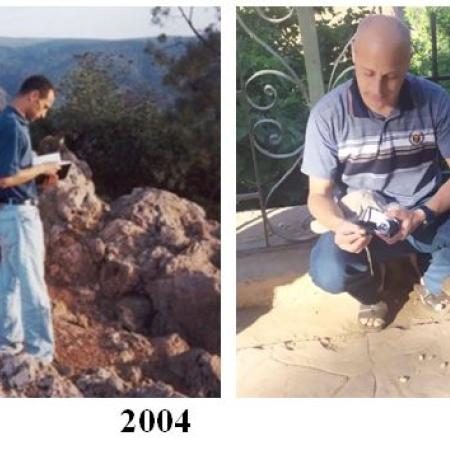
When I arrived in the central High Atlas of Morocco in 2002 to study a group of Barbary macaques, I was young and had black hair and the monkeys did not approach me. Today, I lost my hair and the monkeys come to sit next to me. Anyone who wants to study and participate in the conservation of a species must lose his hair to know if he has succeeded in his mission.

